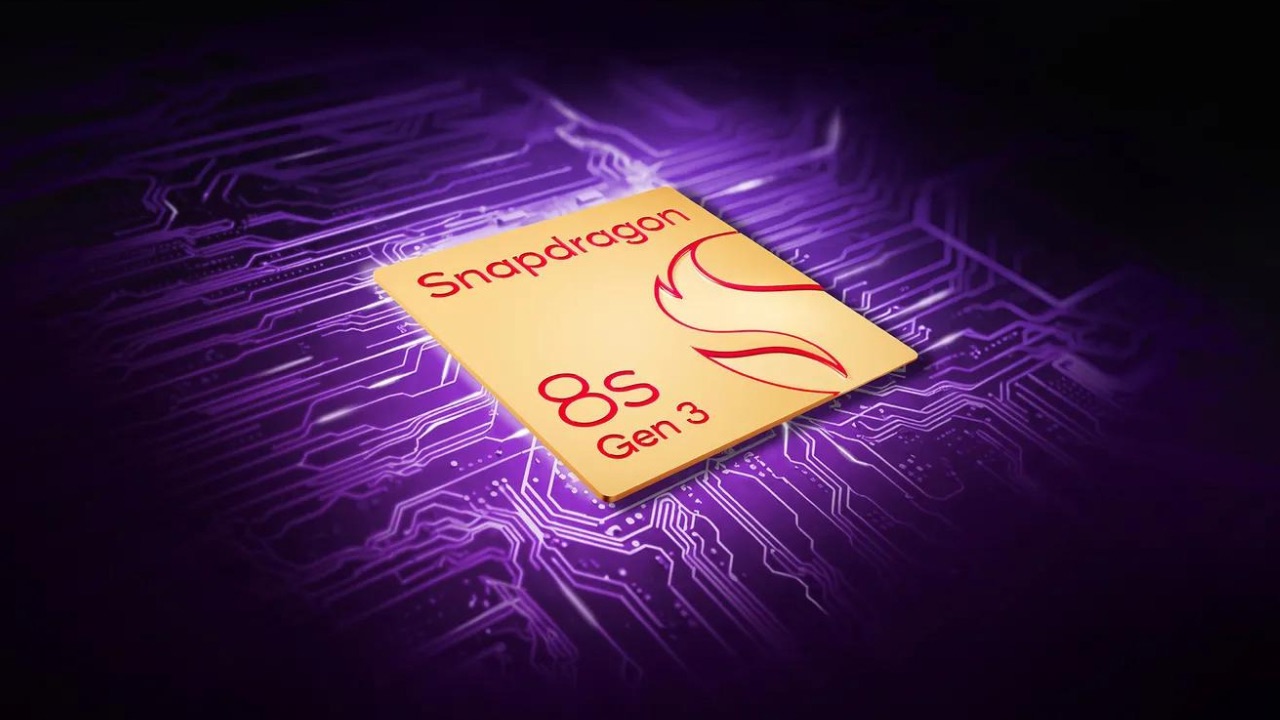Qualcomm has announced a new Chipset by the name of Snapdragon 8s Gen 3, which will be the latest Snapdragon 8-series chipset after the launch of the Snapdragon 8 Gen 3 last year. The new chip boasts of on-device generative AI features, an always-sensing ISP, hyper-realistic mobile gaming, enhanced connectivity and lossless high-definition sound. But how is it different from last year’s 8 Gen 3 and is it more powerful? Let’s answer those questions.
Snapdragon 8s Gen 3: Specifications

The Snapdragon 8s Gen 3 is a 4nm chip based on the TSMC process, consisting of an 8-core CPU structure which includes a Cortex-X4 prime core running at 3.0GHz clock speed, four performance cores at 2.8GHz and three efficiency cores at 2.0GHz. It supports up to 24GB of LPDDR5x RAM (up to 4,200MHz) and UFS 4.0 storage. The Adreno 735 GPU will handle the graphics.
The GPU supports Real-time Hardware-Accelerated Ray Tracing, Snapdragon Game Super Resolution, Adreno Frame Motion Engine 2.0, Snapdragon Game Post Processing Accelerator, HDR gaming, and Snapdragon Shadow Denoiser. The chip is also equipped with Adreno Frame Motion Engine 2.0 which can double the frame rate without extra power consumption.
With the world moving on to AI, it’s being integrated into almost every piece of technology and mobile processors are one of them too. The Snapdragon 8s Gen 3 platform supports a broad array of AI models including popular large language models (LLM) such as Baichuan-7B, Llama 2, Gemini Nano and Zhipu ChatGLM. Models with up to 10 billion parameters are supported.
As for on-device display support, it can run up to 4K resolution screen at 60 Hz or up to a QHD+ display at 144 Hz. For external displays, up 8K resolution panels are supported (30Hz) or 1080p high Refresh Rate ones (up to 240Hz). The displays can support 1Hz till 240Hz dynamic refresh rate, along with 10-bit color depth, Rec. 2020 color gamut, HDR10, HDR10+, HDR vivid, and Dolby Vision.
For connectivity, it supports USB-C 3.1 (Gen 2) along with Wi-Fi 7, NFC, GPS, Glonass, BeiDou, Galileo, QZSS, NavIC, Dual Frequency GNSS and Bluetooth v5.4 with LE audio. Talking of audio, it gets Snapdragon Sound Technology with support for Qualcomm aptX Voice, aptX Lossless, aptX Adaptive codecs. Not only this, but it gets Qualcomm’s Aqstic codec support also, with Aqstic smart speaker amplifier and spatial audio with head tracking. Then, the chip supports Qualcomm Quick Charge 5 technology.
In addition, the chip supports H.265 and AV1 video decoding (up to 4K at 60fps) with HDR playback with support for various formats such as HDR10+, Dolby Vision, and HLG. Coming to optics, it can support up to 36 MP triple camera, Up to 64+36 MP dual camera, Up to 108 MP single camera with ZSL, Up to 200MP single camera along with Qualcomm Spectra Image Sensor Processor. Various capture formats are supported, such as HDR10+, HDR10, HLG, Dolby Vision, 4K HDR Video Capture at 60 FPS and Slow-mo video capture at 1080p at 240 FPS.
Snapdragon 8s Gen 3: Availability
The chip is mainly aimed at premium phones that should have a cheaper price tag making them nearly as much powerful as the top-end Snapdragon 8 Gen 3-powered devices but not identically powerful. Snapdragon 8s Gen 3 will be adopted by key OEMS including Honor, iQOO, realme, Redmi and Xiaomi with the first device expected to be announced in March.
Snapdragon 8s Gen 3: Is It More Powerful Than 8 Gen 3?
As mentioned, it is aimed at the “flagship killers” of 2024 which makes it slightly less powerful than the 8 Gen 3. The less powerful components include the prime core running at a lower clock speed of 3.0Ghz, compared to that of up to 3.4Ghz on the 8 Gen 3. The core setup is also different in 8s Gen 3, with 4 big cores and 3 small ones for an 1+4+3 configuration. The original 8 Gen 3 chip gets a 1+5+2 configuration all of which have a higher clock speed than 8s Gen 3’s cores.
Next up, it has an older generation X70 5G Modem which is also seen in Snapdragon 8 Gen 2. The 8 Gen 3 has the latest X75 5G modem. Even in terms of NPU, which will handle the on-device AI features, the speeds aren’t as fast as the one in Snapdragon 8 Gen 3. As for optics, the 8s Gen 3 doesn’t support 8K video mode or 4K resolution capturing at 120fps either, which is again found in 8 Gen 3.
To sum up, the Snapdragon 8s Gen 3 does pick up a decent amount of features from the Snapdragon 8 Gen 3 which definitely makes it a premium and capable chip. However, Qualcomm still hasn’t given 8s Gen 3 all the bells and whistles which are reserved for the top-tier Snapdragon 8 Gen 3, making it a slightly less powerful chip than its elder sibling.


